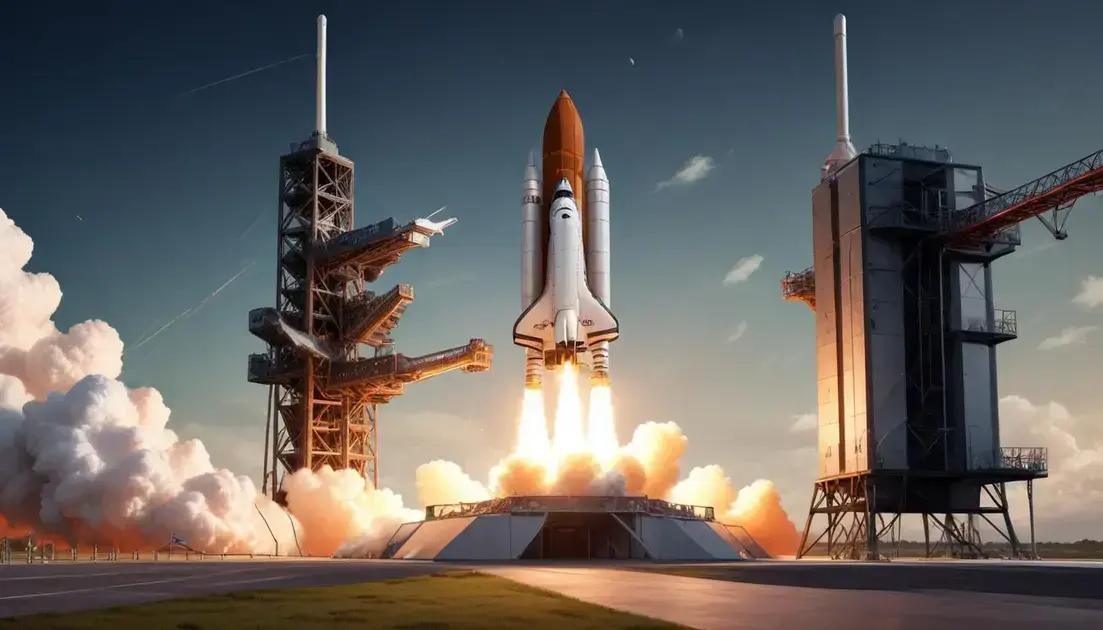
Interkosmos: Socialist Community Space Cooperation
The Interkosmos program was a significant Soviet initiative that fostered international cooperation in space exploration among socialist countries during the Cold War. Its key missions included conducting scientific research, training astronauts, and showcasing technological capabilities. Participating nations like Poland, Hungary, and Czechoslovakia worked together on various missions, which not only advanced scientific knowledge but also strengthened diplomatic ties. The legacy of Interkosmos continues to influence modern space policy, promoting collaborative efforts that are evident in projects like the International Space Station.
Welcome to the fascinating world of Space Cooperation through Interkosmos! This program was all about uniting efforts in space exploration. Curious about how it changed international relations? Let’s dive in!
Historical context of Interkosmos
The history of Interkosmos starts in the 1960s, during the Cold War. It was a time when space was a new frontier. Countries were competing to showcase their technological prowess.
Interkosmos was launched by the Soviet Union as a way to bring socialist countries together in space exploration. The idea was not just scientific; it also had a political edge. By collaborating, the countries aimed to spread their influence and show unity.
This program offered many nations a chance to participate in space missions, which was exciting. Countries like Poland, Hungary, and Czechoslovakia joined hands with the Soviets. Together, they launched several missions, sharing knowledge and resources.
These missions often included scientific experiments and data collection. They were also symbolic. They showed how countries with similar political ideologies could work together, even in the vastness of space.
As Interkosmos progressed, it became a platform for diplomatic discussions. This helped boost international relationships during a tense period in history. Overall, the program left a lasting mark on both scientific and political landscapes.
Key missions and objectives
Interkosmos had several key missions that shaped its goals in space exploration. These missions were aimed at scientific discovery and unity among socialist countries.
One major objective was to conduct scientific experiments in space. This included studying the Earth’s atmosphere and cosmic rays. The data collected helped scientists understand our planet better.
Another important mission was to train astronauts from various countries. This gave them exposure to space travel. It also strengthened collaboration among the nations involved.
Interkosmos missions often focused on political and diplomatic goals too. They aimed to showcase the technological capabilities of the Soviet Union and its allies. This was a way to boost morale within the socialist camp.
Many missions successfully launched satellites into orbit. Each satellite had specific purposes, like communication or Earth observation. These achievements raised the profile of participant countries in the global space race.
By setting these missions, Interkosmos helped foster a sense of cooperation among countries. It demonstrated that space exploration could bring nations together for a common cause.
Participating countries
Interkosmos involved several participating countries that played key roles in the program. These nations were mainly part of the socialist bloc during the Cold War.
One of the first countries to join was Poland. They contributed to the scientific experiments and launched satellites with Soviet help. Another important player was Hungary, which sent its own astronauts on missions.
Czechoslovakia also participated actively. They engaged in joint missions and shared valuable data with the Soviet Union. This helped strengthen diplomatic ties among the countries.
Other nations included Bulgaria, East Germany, and Romania. Each of them brought different scientific skills to the table. Together, they worked on various projects that unified their efforts in space.
By collaborating, these participating countries could showcase their abilities. It highlighted how cooperation in space could lead to greater achievements. Interkosmos became a symbol of solidarity among socialist nations.
Impact on global space policy
Interkosmos had a significant impact on global space policy during its time. It changed how countries viewed cooperation in space exploration.
Before Interkosmos, space was mainly about competition. Countries raced to prove their power. However, this program showed that collaboration could lead to great achievements.
This shift encouraged other nations to consider partnerships in space. Countries realized they could benefit from sharing knowledge and resources. They began to establish their own joint missions.
Interkosmos also influenced international agreements on space activities. It helped promote peaceful uses of space, focusing on scientific research instead of military competition.
This change in attitude paved the way for future space programs. Organizations like the European Space Agency were inspired by the spirit of collaboration seen in Interkosmos. Today, many countries work together on international projects.
Overall, the impact of Interkosmos on global space policy was lasting. It showed that working together can create opportunities and expand our understanding of space.
Legacy of the program
The legacy of the Interkosmos program is significant and far-reaching. It set a foundation for international cooperation in space exploration.
Interkosmos helped inspire future space missions by demonstrating how countries could work together. This spirit of collaboration is still important today.
Many of the scientific findings from Interkosmos contributed to our understanding of Earth and space. The data gathered laid the groundwork for later research.
Countries involved in the program gained valuable experience. They learned how to operate in space and trained astronauts, which boosted their own space programs.
Even after its end, the impacts of Interkosmos continued. The idea of international partnerships influenced other organizations, like the International Space Station.
Today, space exploration sees more collaboration than ever before. Many nations share knowledge and work on projects together. This trend can be traced back to the collaborations established by Interkosmos.
Conclusion
In conclusion, the Interkosmos program marked a significant milestone in international space cooperation. By bringing together multiple countries, it showcased the power of collaboration in space exploration.
The missions improved our knowledge of space and created lasting partnerships. These partnerships paved the way for many future projects in space science.
As the world continues to explore space, the legacy of Interkosmos reminds us of the value of teamwork. Today, many nations still work together to understand the universe better. The spirit of cooperation started by Interkosmos lives on.
Therefore, by looking back at this program, we can appreciate the progress we’ve made. Moving forward, let’s continue to build on that foundation, exploring the cosmos together as one global community.


